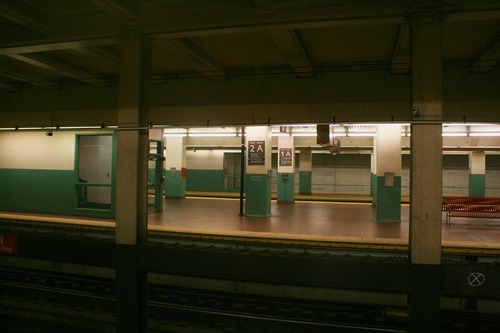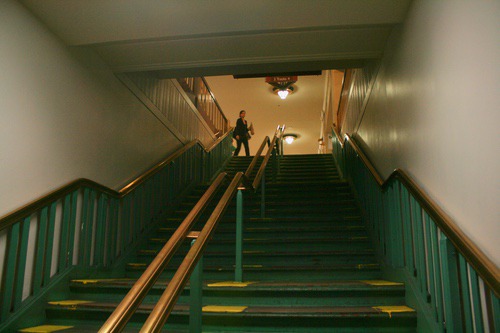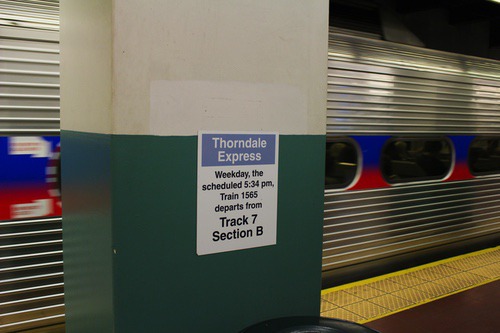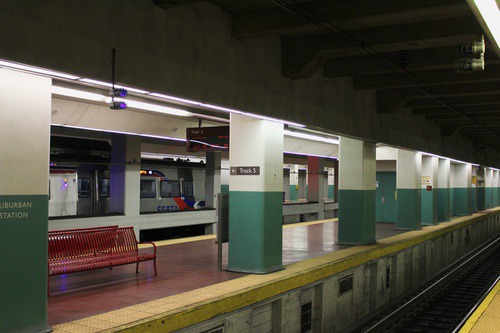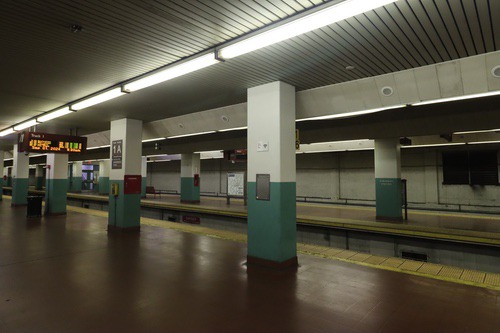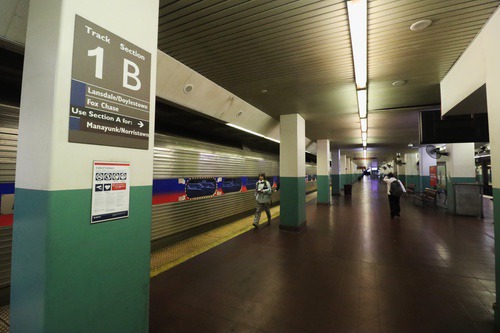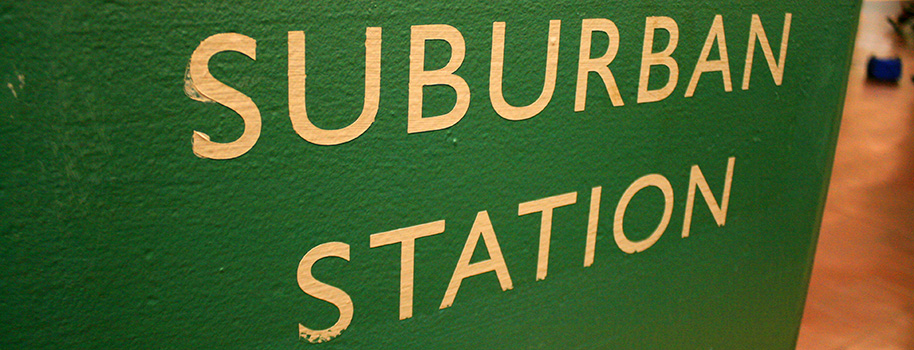



Suburban Station opened in 1930 and was originally the completely stub-end underground terminus for electrified Pennsylvanian Railroad Suburban Train services. Steam and later diesel trains have always been banned from running to or stopping at Suburban Station. This new underground station was one of two along with 30th Street Station that replaced the congested and elevated stub-end Broad Street Station that meant many intercity and long-distance trains exclusively serviced Philadelphia at North Philadelphia to avoid having to reverse direction. The new 30th Street Station allowed long distance trains on the Northeast Corridor to stop at the new lower-level platforms at 30th Street Station, since then Intercity passengers can make easy and free connections to frequent suburban trains for the one-stop ride to Suburban Station into Center City as this one stop connecting ride was included on all long-distance tickets to 30th Street Station.
These free connections to Suburban Station and expanded to Market East Station since Center City Commuter Connection opened in 1984 continue to this day. All Amtrak tickets are valid for a one or two stop ride from 30th Street Station into Center City. The process of using an Amtrak ticket for these connections is seamless with the QR Codes on Amtrak’s eTickets working directly at the newly installed SEPTA Key turnstiles and faregates. Amtrak’s Keystone Service, Clockers (and the Philadelphia to Washington commuter-oriented Chesapeake between 1980 and 1981) have all terminated or originated at Suburban Station. Amtrak service into Suburban Station fully ended on February 1, 1988 when diesel locomotives began to operate under wire on the Keystone Line due to a lack of serviceable electric locomotives and the numerous issues caused by old Metroliner EMU trains being the only available rolling stock. After this service change many Keystone Service trains were then extended to New York City after an engine change in Philadelphia before all electric service was restored in 2006 using push-pull trainsets, no longer requiring an engine change for the train to change direction.
Today the station is the terminus of all trains on the Cynwyd Line. Nearly all other SEPTA Regional Rail trains continue through the station using the Center City Commuter Connection. These trains normally pause in Suburban Station for a crew change as they interline between the six ex-Redding Regional Rail Lines, and six (not including the Cynwyd Line) ex-Pennsylvania Railroad Regional Rail Lines. Non-interlining through trains (due to a ridership imbalance this is more much common for trains on the ex-Pennsylvania Railroad Trenton, Chestnut Hill West, Paoli/Thorndale, Media/Wawa, Wilmington/Newark and Airport lines) generally run through Center City and originate or terminate at Temple University Station (although weekend Trenton Line trains originate or terminate at Market East). Until the COVID-19 pandemic a few rush hour express trains on the former Pennsylvanian Railroad Regional Rail Lines still originated or terminated at Suburban Station. When I visited in 2013 special signs along the normal platform for the Paoli/Thorndale Line said "Thorndale Express: Weekdays, the scheduled 5:34pm, Train 1565 departs from Track 7, Section."
For platforms the station as a stub-ended terminus had eight tracks and four island platforms to service all of these tracks. The Center City Commuter Connection modified this track layout to provide additional platform capacity for the now four through tracks that see the vast majority of train service through the station as an intermediate stop before trains continue through to Market East Station. Starting from the South is Track 0, this is a stub end track with an island platform shared with track 1 but only used by platform 0 (this platform doesn't lead up to the portion of the mezzanine within fare control). Track 1 normally uses an island platform shared with Track 2. This is followed by an island platform for Tracks 3 and 4. Tracks 1 through 4 are the four through tracks with most trains leaving from their two island platforms. This is followed by three more tracks 5, 6 and 7. Track 5 has its own dedicated platform that track 4 also platforms on. This is followed by an island platform for Tracks 6 and 7.
The platforms at Suburban Station are extremely long. The station is designed in a way so two trains can stop in the station at the same time at the same track with the platforms divided into Section A or Section B. Signage, both destination signs and fixed signs on the platforms, indicate both a track number and a section number. For example, Track 1 Section B is for Lansdale/Doylestown Line trains with Manayunk/Norristown Line trains using section A (signs along Track 1 section B, literally say Use Section A for: Manayunk/Norristown with an arrow pointing in that direction).
The platforms (with the two through planforms wider than the platforms for originating or terminating trains) are lined with concrete columns painted green towards their bottom halves and off-white for their top halves. Suburban Station is painted in off white on the bottom of the columns facing the tracks as the station platforms main signage for the station’s name.
Photos 1-4: April 10, 2013; 5-12: October 2, 2013; 13-16: September 1, 2024; 17-28: September 2, 2024 29-47: January 17, 2025;
